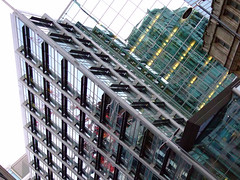Global real estate advisor DTZ reported that this year the demand for office space is likely to increase. Office space demand will be more this year, the report added.
As per the reports of DTZ, nearly 30.5 million sq. ft. of office space will be demanded this year. Comparing to the last year’s office space demand, this year it will be more and far better.
Global economy has started picking up after the downturn. This will boost the office space absorption this year. Additionally other factors such as increase of foreign direct investment (FDI) in the retail sector also will have impact on office space demand of the current year.
Along with the 51% of FDI, the revised repo rates of Reserve Bank of India (RBI) too will boost the demand for office space. The market sentiment has resulted and the economy looks stronger now.
Anshul Jain, DTZ India CEO, said that the fears over the global financial crisis have started fading, resulting in improved market sentiment. Continue reading










